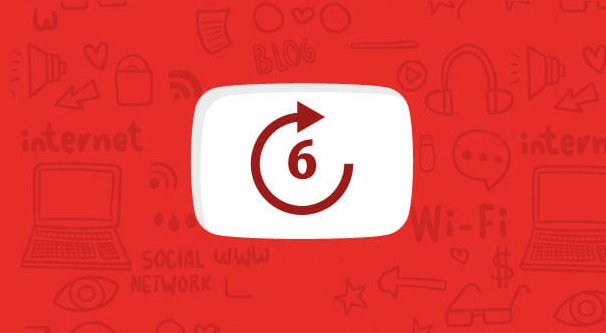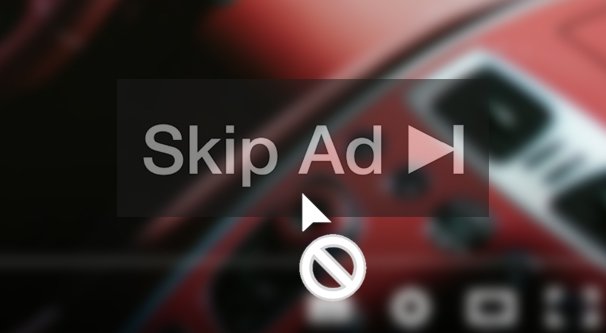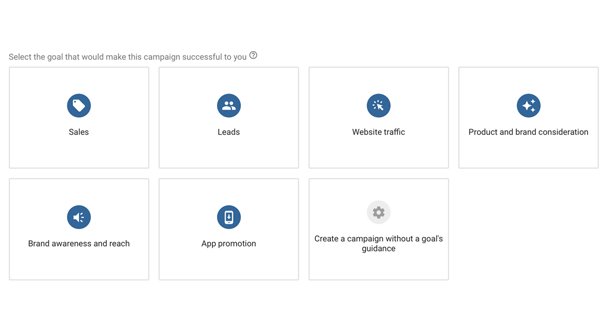 Written by ContentPowered.com
Written by ContentPowered.comYouTube has a variety of different ad formats available to you, from the overlays and recommended videos to the bumper ads and even the newest double ad formats they’ve been testing out.
Today, I’d like to talk about one kind of ad in particular: the bumper ad. First, though, let’s talk about the different ad formats available and where the bumper stands.
YouTube Ad Formats
Technically, YouTube has six different formats for their ads. These are Display ads, Overlay ads, Skippable ads, Non-Skippable ads, Bumper ads, and Sponsored cards. They have different placements and different specs, so let’s learn them.
Display ads are large graphics that display to the right of a video on a desktop format, above the suggested videos and playlist information. If the user has the video player expanded to large format or theater mode, the ad is pushed down to below the video, the same as the playlist information and recommended videos are.
Overlay ads are similar to Google’s website display ads. They’re small boxes, similar to banner ads, that display on top of the video while the video is playing. They’re semi-transparent and hover over the lower 20% of the video as horizontal images and text. They can be closed immediately if the user wishes, or interacted with if they so desire.
Skippable video ads are ads that take the place of the video. Thus, they are the same size as the video player itself, so size depends on the size of the video player for the user. These video ads can be fairly long, but the user is able to skip them after five seconds have elapsed. Additionally, these ads can display before the video plays, after the video is done playing, or in the middle of the video like a commercial break.
Non-Skippable video ads are the same as Skippable video ads, in terms of their placement and location within a video. That is, they can be before, during, or after the main video plays. They are limited to 15-20 seconds in length, with the limit varied depending on regional standards. They must be watched all the way through for the video to play or resume play, though post-video ads don’t impact much if the user chooses to leave.
Bumper ads are similar to Non-Skippable video ads. They are video ads that typically play before a video, rather than during or after the video is played. They can only be up to six seconds in length, and the user is required to watch them before their video will play.
It’s worth mentioning here that Skippable, Non-Skippable, and, Bumper ads can be mixed and matched. That is, a video might play a Bumper and a Non-Skippable ad back to back before the video can play, and might play a Skippable ad in the middle of the video as well. They can play back to back.
Finally, Sponsored Cards are ads that display over the top of the video similar to Overlay ads. However, they act more like video end cards and are often contextual to the content of the video. They will show products mentioned or featured in a video, for example. Viewers see a teaser for the card for a few seconds, and can click to expand the card to a full sized ad if it interests them enough. If they ignore it, it will go away. If only more things in life worked the same way, eh?
There are other kinds of ads on YouTube that aren’t covered here, like suggested videos in the search and recommendations. Since those are comparable to Bumper ads, I’m not concerned with them today. Feel free to research them some more on your own, though!
Bumpers Versus Others
Bumper ads are short, sweet, and unskippable. Since they’re limited to a maximum of six seconds in length, Google doesn’t even allow them to be skipped. After all, what good does it do to offer a skip button after five seconds if even the most attentive user isn’t going to be able to click it before the sixth and final second has elapsed?
Bumper ads are designed to capture specific moments of clarity. Since Google runs their ads based on the context of the video and the context of your user profile, demographics, and search history, there’s a high chance that you’re going to be interested in whatever the ad is advertising. You get a brief hit of “hey, check this out” before going on with your regularly scheduled programming.
Google’s recommended use case for Bumper ads is in conjunction with other kinds of ads. Think of it this way. You use a longer Skippable or Unskippable ad to delvier a longer and more robust product pitch. You use your 20 seconds wisely, and you deliver a value proposition, complete with call to action, in your ad. These ads aren’t going to have the highest possible conversion rates, but they’ll be fairly decent, assuming your ad quality and your targeting line up.
Bumper ads are the follow-up, the remarketing ad format. You build an audience out of the people who have seen your longer ad once or twice, and rather than force them to sit through it again, you deliver the Bumper version. This version is shorter and cuts out most of the details, as a sort of reminder or greatest hits of the previous Bumper. Since users seeing the Bumper have already see the longer version, they remember the pitch, and it can remind them to take action if they haven’t already.
Bumper ads drive a lift of 9% on average in terms of brand awareness, according to a study from Google from a couple of years ago. They also drive ad recall and can increase brand awareness.
With modern ad displays, including Google’s new double ads before videos, Bumper ads can be slightly tricky to use. You don’t want to play your longer ad and your Bumper ad back to back, after all. Try to use them sequentially over different days or with different audiences.
How do Bumpers then compare to other ad formats? They’re excellent as a second-tier ad format or for when you don’t need a long ad to convey your point. They’re not so good at delivering a robust value proposition or a length scenario.
Longer video ads have their own perks. The longer unskippable ads can take their time to deliver a full value proposition, though they’re still limited to fairly short ads. This gives you “plenty” of time to fully explain yourself in your ads.
Skippable ads are a bit of a different beast. In a way, they’re even harder to use effectively than unskippable ads. For one thing, many users will habitually skip them at the five second mark, no matter how compelling the ad looks. They’re there because they want to watch a video, not because they want to watch your ads, and you’re getting in the way. You have to have an extremely compelling first five seconds to capture their attention completely.
In my view, skippable ads are powerful tools for the initial contact. If you can hook a user into watching a lengthy ad, that’s great, but most of them are only going to watch five seconds. Treat it like a low-quality, high volume display ad and you have the right idea. You just want to get the idea of your brand and product out there.
You can then follow up your advertising with unskippable ads, either with the longer unskippable in-stream ads or with the Bumper format. The route you take depends largely on how many people decide to watch longer portions of your skippable ads, I would imagine.
Fun Fact: YouTube maintains a leaderboard with some of the top Bumper ads on their platform. If you want to see what some good Bumper ads look like, just visit this page and check them out. Just be aware that this is a global list, so you might not want to try to directly replicate ads from outside your region.
How to Make the Most of Bumper Ads
If you want to use Bumper ads, you can make great use of them with a few solid tips. Follow these guidelines and you’re sure to have a decent ad on your hands.
First, focus on a single objective with your ads. Are you trying to build brand awareness? Are you driving clicks to your website? Are you remarketing to an audience of abandoned carts and trying to get them to pull the trigger on a purchase? Know your audience and your goals, and focus your ads on that one single objective.
If you have more than one ad objective you want to use Bumper ads to achieve, that’s fine. Just create more than one set of Bumper ads. There’s no reason to try to cram everything into a meager six seconds, after all.
Even something as simple as selling a smartphone can be limited down to a single factor. You don’t have time in a Bumper ad to promote the ultra-strong scratch-resistant glass, the long battery life, and the high resolution camera. That’s three different ads worth of content right there.
Second, consider working backwards when you’re using the two-tiered approach. If you want to have longer ads to draw people in and referential Bumper ads to capture them, that’s fine, but start with the shorter ads. It’s generally easy to script and shoot a shorter ad than it is to cut a longer ad down to a coherent six seconds. Start short and build an unabridged version, rather than the other way around.
Third, make sure you’re targeting the right audience. An ad is an ad, right? There isn’t a single ad network on the planet that doesn’t have at least a handful of different targeting options, and Google is actually #2 globally for the variety of different factors you can target. YouTube ads have a ton of options for targeting your potential audience, and you need to make use of as many of them as possible.
Figure out specifically who you want to be reaching with your Bumper ads, and develop the audience targeting factors you need to reach only those users. If that means a specific gender, a specific age range, a specific interest in types of videos, or anything else, make use of it. Don’t let your traffic or your tools like dormant on the table.
Finally, don’t be afraid to go bizarre. Some of the best and most memorable ads, on YouTube and on television, are just off-the-wall crazy. Old Spice is a master of the bizarre advertising, but many other brands have their own brand of surreal humor. There are a lot of different routes you can take, but don’t be afraid to get a little crazy.
Which Ad Format is Better?
So to go back to the title, briefly before wrapping things up, which is better? Bumper ads, or some of the longer, non-skippable ad formats?
The answer, as you might expect from reading any of my other comparison pieces regarding marketing technology, is “both.” Both types of ads are the best type of ad for a certain scenario. They have their own strengths and their own weaknesses. Bumper ads are short, catchy, and great for remarketing. Longer ads have more time for initial impressions, value propositions, and brand recognition. Using them in conjunction is the best option in general, in fact. I wouldn’t recommend limiting yourself to one or the other.
What about you? What are your experiences with Bumper ads, and how have you used them to best effect?




